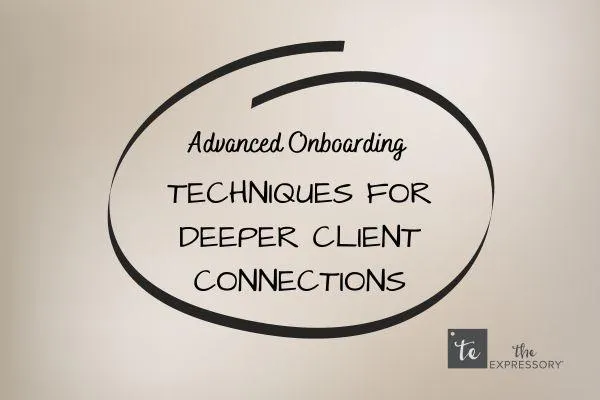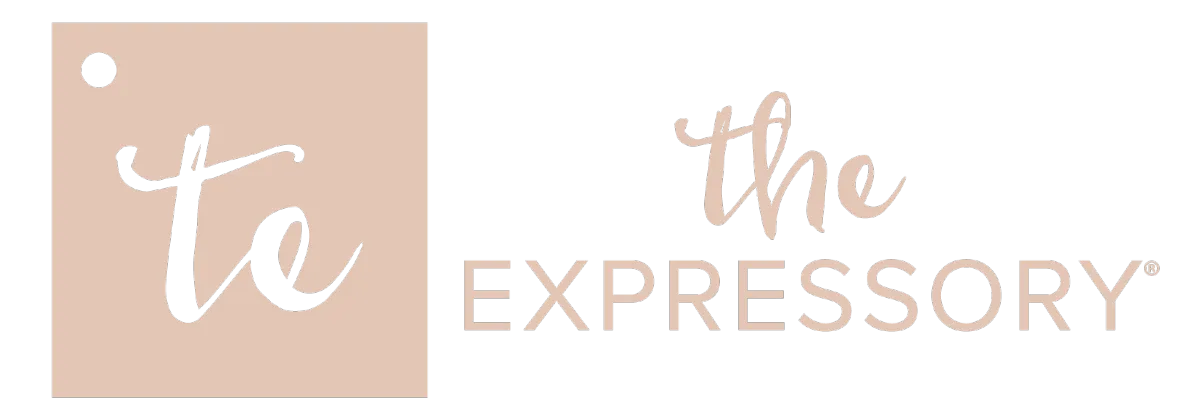
What Swimming Teaches Us About Team Relationships
In my latest video, I break down how swimming teaches us the importance of these relationship-building efforts and the specifics of what we as leaders need to nurture with our teams.
Holiday Gift Insights - What Everyone Else Is Doing
In an effort to simplify the decision-making process, we're sharing some of the trends we've seen with gifting over the years. We're even sharing our best seller and why that gift had such success.
What Makes A Successful Holiday Gift? The Travel Bag Edition
Last year we had the opportunity to work with one of our clients in the travel and tourism space to design an experience that delivered their highest engagement yet.

Advanced Onboarding Techniques for Deeper Client Connections
Advanced Onboarding Techniques for Deeper Client Connections
The initial meetings with new clients play a big role in shaping the future of the relationship. They set the tone and trajectory for the partnership. That’s why I’m always on the look out to bring you fresh (or even “old school”) approaches to setting the stage for a deeply connected relationship.
For this latest strategy, I’m drawing inspiration from a book I just completed, by Priya Parker, called “The Art of Gathering”. During her explanation of how to best gather for impact, deeper meaning, and lasting relationships, she talks about setting the stage before people actually gather. In a future blog, I’ll share all about how I believe we can uplevel the relationships we create during events, using her strategies. But for now, I want to share how I believe her ideas can shape our relationships with clients before we even start to work with them.
Setting the Stage for Onboarding with Priming
Priya shared that priming, or “pre-gaming”, is a powerful strategy that most people overlook when it comes to gathering. You’re gathering for a purpose, so the thought is to begin to prime the attendees for that purpose before they even arrive.
At its core, priming is about preparing someone for a particular experience or action. It's the psychological process where exposure to one stimulus influences a response to the next. In the context of client onboarding, I’ll say that it is the practice of preparing the client’s mind for a deep, targeted, and meaningful engagement. It means setting the stage for when you begin your working relationship.
What if, before that all-important onboarding conversation, we could dive into the very soul of what drives our clients?
What does it look like?
In The Art of Gathering, Priya describes one example of priming as sending advanced worksheets for the attendee to complete and submit ahead of time. For client onboarding purposes, this would be a questionnaire that gets to a deeper level than just some of the basic getting to know you questions we’ve covered in the past.
The type of questions that should be included in this effort should be questions that make the clients pause and reflect. Questions that aren't just about business, but also about past experiences, motivations, and even fears.
Once you’ve crafted these questions, you want to physically send them ahead of your time together. Share with the client that this task isn’t just about another activity to add to the project. This is a critical step in laying the foundation of working together and it’s something that you (and/or your team) will review closely to tie into your efforts to provide best-in-class service.
When the client submits their answers, you’ll need to make time to review carefully. You’re going to want to reference some of the sentiments shared at some point during your onboarding so that the clients feel seen and understood. The value in this type of activity is that you are creating an emotional connection with the client even before you start. They feel tied to you because you asked for this information. They feel even more connected to the process and the purpose of working together, which will show up in their commitment to success in the long term – Along with the valuable relationship you’re setting the foundation to develop.
The goal is to take superficial, transactional interactions and turn them into meaningful, transformational engagements. These are the types of relationships and engagements that develop more referrals and word of mouth.
Crafting Impactful Priming Questions
An effective priming strategy for onboarding is going to revolve around questions that evoke insightful responses. So, let’s review how to make that as impactful as possible.
You want to make sure you’re using open ended questions instead of “yes” or “no” type prompts. Leave plenty of room for them to reflect and provide detail. Example: "What aspects of your previous partnership worked well, and what did you feel you were missing?"
You also want to use emotions where you can. We’re emotional beings and it allows the client to relate and pull forward stories. Example: "What part of this project excites you the most?"
To develop the right questions for your own priming experiences, take into consideration the industry you’re in and the deliverables that you promote.
We’ve listed some ideas for different industries below. As you review, think about what resonates with you and adjust for your own brand. Bring in some of your brand personality as well.
Marketing Agencies:
Describe a campaign that was created for you in the past that you really loved. What about it spoke to you? Why do you think it resonated with you?
What fears do you have about changing your (brand, website, ads)?
If we’ve done this right, what do you imagine people will say about it? How will it make them feel?
What has held you back from doing this work sooner?
In 5 years from now, what do you want your next big marketing considerations to look like?
Financial Advisory Firms/CPA/Bookkeeping:
Think back to early memories about money. What were some of the phrases you were taught about money and how did it make you feel growing up?
What's one financial goal you're concerned about, and why?
What's one financial goal you're excited about, and why?
Is there anything that stresses you about finances and what do you find triggers this feeling?
If you had an excess of savings, and you decided to treat yourself, what would be exciting to you?
In 5 years from now, what do you want to be thinking about your finances?
IT Companies:
What has held you back from making changes sooner?
What caused you stress about previous implementations?
What excites you about having this work completed?
What has frustrated you about working with outsourced companies on this in the past?
In 3 years from now, how do you want your IT foundation to be supporting your company?
Consultancy Firms:
Think back to a previous partnership that provided great value. What made it stand out?
What areas of your business do you feel the most vulnerable about?
What has held you back from doing this work sooner?
What would make you excited about the future of your business?
Immigration Attorneys:
What excites you about the possibilities in your future?
What has held you back from this investment?
What worries you when you think about not taking these next steps?
What worries you about starting this process?
What would a partner have to do to help you feel most at ease about working through this process?
These examples are clearly just a general guide. Each business should adapt the priming questions to their own unique offering and industry. Once you do decide on your priming questions, test them in the real world. Integrate them and see how they work. How are people responding? If you don’t feel like they’re going deep enough, refine them. Collect feedback from clients who have been through it and continuously adjust. You’ll learn along the way to get to a place where you’re starting to feel deeper connections with your clients.
As we mentioned earlier, the answers provided in this questionnaire will help you shape your onboarding process to make sure you’re covering off some of their concerns. During your early meetings and conversations, you want to point out that you heard their concern by reading their words and confirming that they feel like the actions and deliverables you’ve been discussing will mitigate those feelings. And on the flip side, you want to point out the things they look forward to and confirm if they feel that your plans will help get them there.
Overall, I see priming for onboarding as playing the role of laying the groundwork for long-lasting relationships that not only increase the lifetime value, but also provide more referrals. People who are emotionally connected tell others about their positive experiences every chance they get. A long-lasting relationship needs validation, understanding and care. By taking the time to integrate this type of strategy into your onboarding, you are covering those things from the start.
Cultivating meaningful and lasting relationships for businesses is the heart of what we do at The Expressory. If you need additional help with the questions or strategy that makes sense for your brand, please don’t hesitate to reach out. You can join us at one of our upcoming community Q&As to discuss ideas and get your questions answered. Or you can schedule some time to talk with us directly.
Address:
1500 S. Sylvania Ave #106
Sturtevant WI 53177
Phone:
414.243.8971

